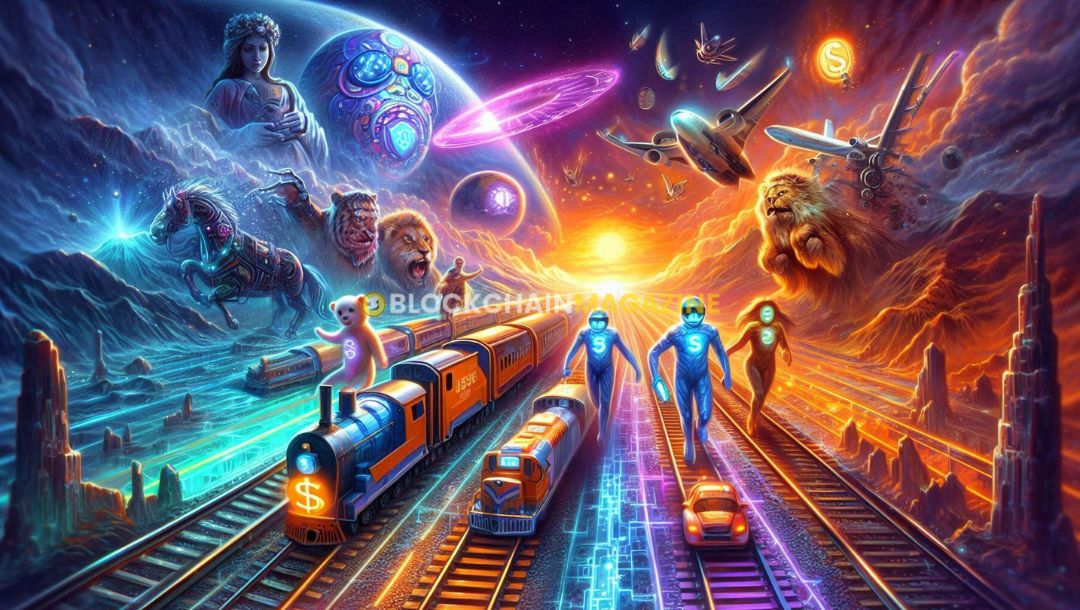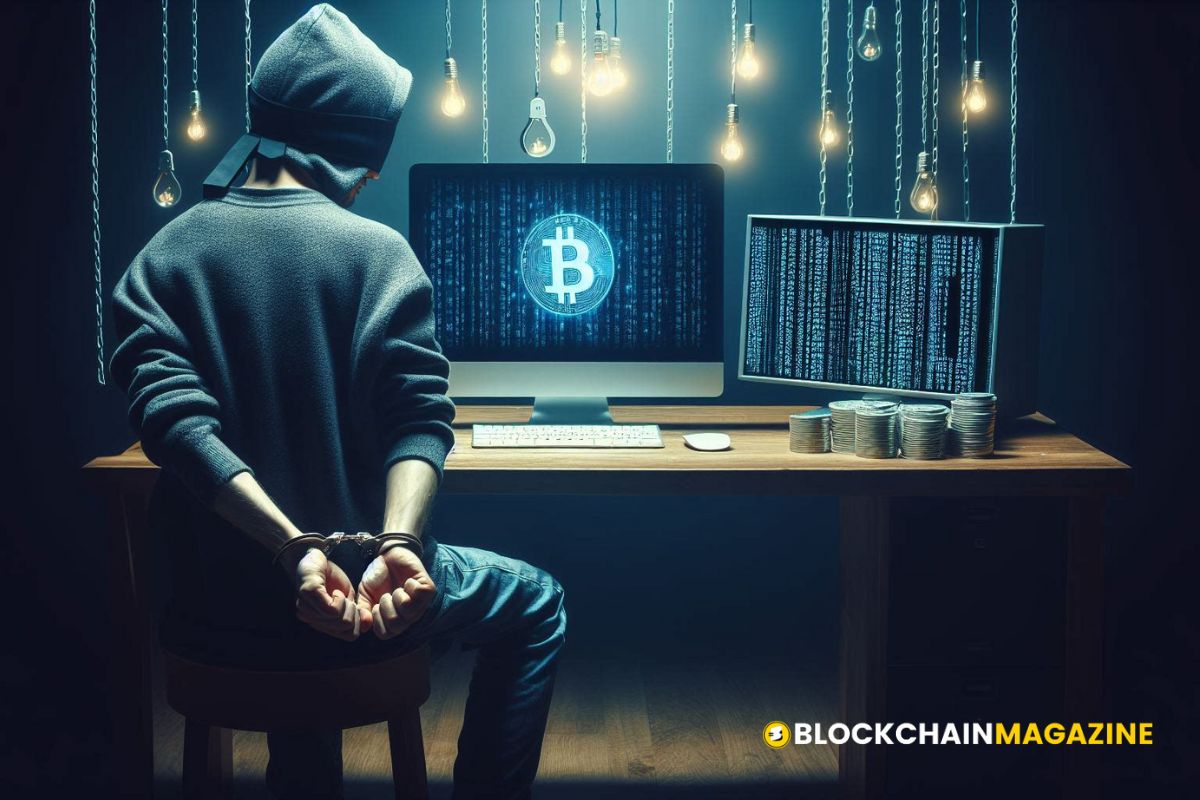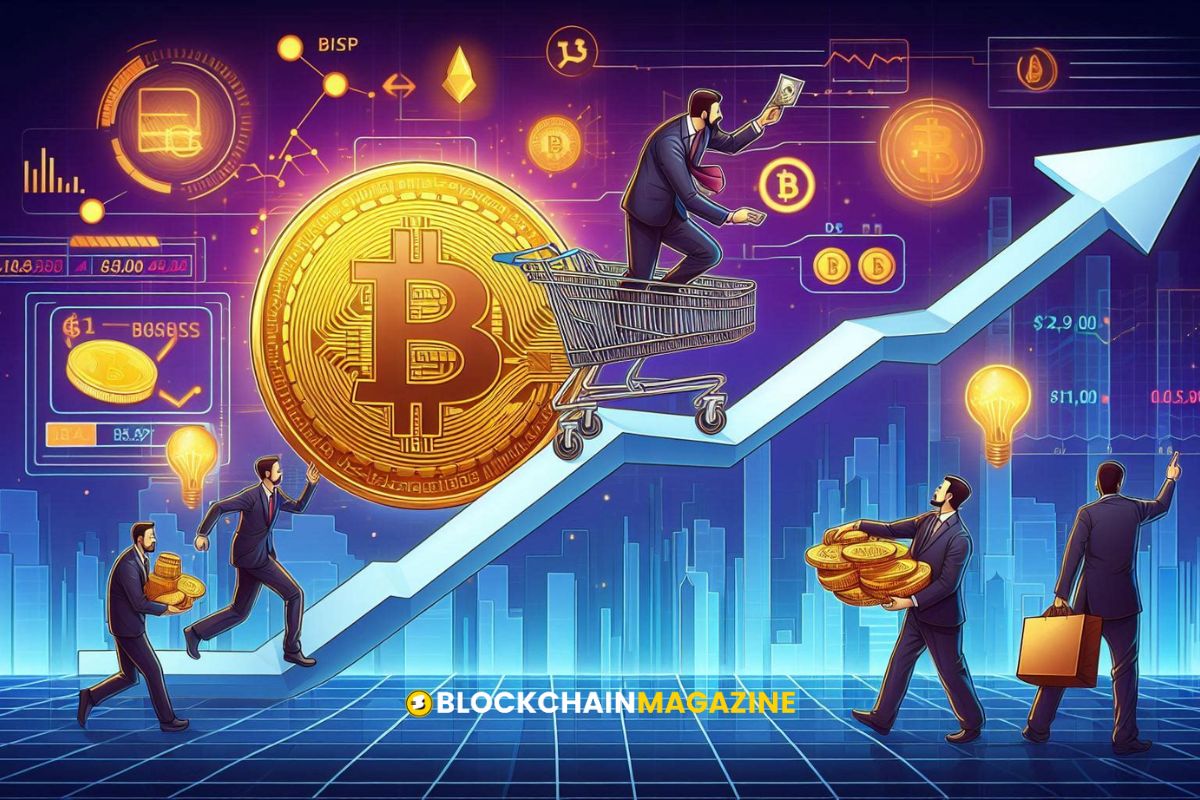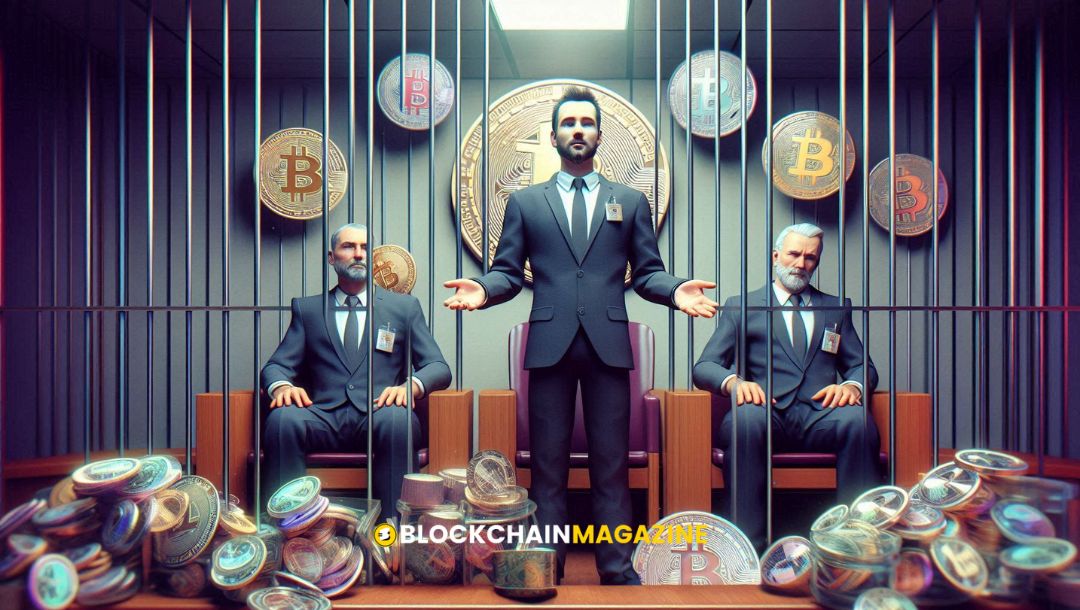Top Amazing potential signs of recovery and a shift towards utility-driven NFTs in 2024
The potential for recovery and growth in the NFT market in 2024 is palpable. After a period of explosive growth followed by a significant downturn, the market is now evolving, focusing on practical and valuable applications of NFTs. Hybrid NFTs, RWA tokenization, NFT gaming expansion, and Bitcoin-based NFTs (Ordinals) are key trends that could drive the market forward. For businesses and investors, understanding and leveraging these trends will be crucial for success in the evolving digital asset landscape.
Key Takeaways
- NFTs are shifting from collectibles to utility-driven digital assets with real-world applications.
- GameFi is transforming gamification by allowing ownership of in-game assets, presenting new opportunities.
- Improved regulatory frameworks are expected to foster a secure environment and boost investor confidence in NFTs.
- Integration with DeFi is enabling the tokenization of real-world assets and creating new financial instruments.
- Bitcoin-based NFTs (Ordinals) and hybrid NFTs combining multiple utilities are emerging as significant trends.
NFTs Evolving Beyond Collectibles
As we move into 2024, the NFT landscape is expected to shift significantly from mere collectibles to utility-driven digital assets. This evolution could mark a crucial change in the NFT paradigm, with tokens serving as conduits between the digital and physical worlds, offering value beyond artistic appreciation.
Real-World Applications
NFTs are increasingly being used in various real-world applications. For instance, certain NFT collections grant access to exclusive groups, online and in-person events, and unique merchandise. They are also being explored in virtual real estate, representing ownership of digital land or assets in online spaces. In the music industry, NFTs are being used to sell unique digital memorabilia and even as a way for artists to monetize their work directly. This shift towards real-world applications could revolutionize the future of cryptocurrency.
Digital-Physical Conduits
Tokens with real-world applications could mark a crucial change in the NFT paradigm, serving as conduits between the digital and physical worlds. This means that NFTs could be used to verify identity, grant access to exclusive events, or even represent ownership of physical assets like real estate or vehicles. The potential for NFTs to bridge the gap between the digital and physical realms is immense.
Value Beyond Art
While NFTs initially gained popularity through digital art, their value is expanding beyond artistic appreciation. NFTs are now being used in various industries, including gaming, music, and real estate, to provide unique and verifiable ownership of digital and physical assets. This shift towards utility-driven NFTs could reshape market trends and offer new opportunities for innovation and growth.
GameFi: The Intersection of Gaming and NFTs
The integration of NFTs into the gaming industry is revolutionizing player engagement and game development. By granting players true ownership of in-game assets, NFTs are introducing innovative mechanics and fostering dynamic gaming economies.
Ownership of In-Game Assets
NFTs allow players to own and trade in-game assets, enhancing user engagement and interaction. This ownership model is transforming how players interact with games, making their experiences more immersive and personalized.
Transforming Gamification
While play-to-earn models faced criticism in 2023, gaming NFTs are evolving into tools for creation, customization, and governance. User-generated gaming metaverse worlds are leveraging NFTs for provable digital asset ownership, creative contributions, and community coordination.
Future Prospects
The future of gaming NFTs looks promising, with a diverse range of projects spanning various genres, including RPGs, sports fantasy, digital collectibles, and metaverse worlds. Interoperability and cross-platform capabilities will become increasingly important as the space matures, allowing seamless integration across different games and metaverses.
The future of social NFTs in 2024 will see integration with DeFi, asset convergence, web3 games, and tokenizing real-world assets. The NFT market will be driven by utility and innovation.
Regulatory Clarity and Its Impact on NFTs
The NFT landscape in 2024 is poised to undergo significant changes, particularly in the realm of regulatory clarity. The intervention by the SEC in 2023, which involved filing an unregistered securities claim against an NFT collection, has underscored the urgent need for clearer legal frameworks. Regulatory uncertainties have been a major challenge, and both experts and users are calling for a well-defined legal landscape as the space continues to grow.
Improved Frameworks
Regulators around the world are actively developing guidelines to ensure a more secure and transparent environment. This effort aims to build trust and market stability, offering a safe environment for NFT creators, traders, and investors to pursue their activities.
Secure Environment
The enhancement of crypto regulatory frameworks is expected to coincide with the maturation of the NFT market. A more secure environment will not only protect participants but also foster innovation and growth within the space.
Investor Confidence
A clear and robust regulatory framework is essential for boosting investor confidence. As the market evolves, the focus on transparency and sustainable practices will likely lead to a more stable and credible NFT market.
The challenges faced by the NFT market have prompted a reevaluation and potential maturation, highlighting the need for greater regulation and transparency.
DeFi Integration: Merging NFTs with Decentralized Finance
The integration of NFTs with decentralized finance (DeFi) protocols is poised to be a game-changer in 2024. This revolutionary step will enable the tokenization of real-world assets, bridging the gap between traditional finance and the crypto world. NFT holders could leverage their tokens as collateral for loans or generate interest through DeFi platforms, marking a significant leap towards financial inclusivity and asset monetization.
Tokenization of Real-World Assets
Tokenizing real-world assets as NFTs can unlock immense value. Imagine owning a fraction of a high-value asset like real estate or art, which can be easily traded or used as collateral in DeFi platforms. This not only democratizes access to valuable assets but also enhances liquidity in the market.
Enhanced Liquidity
One of the most promising aspects of merging NFTs with DeFi is the potential for enhanced liquidity. By allowing NFTs to be used in various financial activities, such as lending, borrowing, and staking, the market can become more dynamic and fluid. This could lead to more robust and resilient financial ecosystems.
New Financial Instruments
The fusion of NFTs and DeFi will likely give rise to new financial instruments. These could include NFT-backed loans, fractional ownership, and even NFT-based derivatives. Such innovations could provide more options for investors and create new revenue streams for NFT holders.
In 2024, the convergence of NFTs and DeFi could redefine financial landscapes, offering unprecedented opportunities for asset monetization and financial inclusivity.
Market Trends and Forecast for 2024
Recovery Signs
As we look ahead to 2024, various trends are set to reshape the NFT development landscape, presenting new opportunities for businesses and investors. Despite the troubles encountered by NFTs in 2023, many analysts remain bullish about the technology’s prospects heading into 2024. NFT sales in 2024 are expected to show signs of recovery, with market trends indicating a potential for growth and mainstream adoption.
Sustainable Growth
TechNavio projected a CAGR of 30.28% between 2024 and 2028, aiming for a $68 billion NFT market. The year-over-year growth in the NFT market cap for 2024 is predicted to be at least 23.27%. Geographically, North America and Europe have led in NFT adoption, but regions like Singapore, China, Venezuela, and Nigeria show promising potential.
Utility-Driven Focus
The focus in 2024 is expected to shift towards utility-driven NFTs, moving beyond mere collectibles. This shift will likely be driven by the integration of NFTs with real-world applications, enhancing their value proposition. The impact of crypto volatility, expert opinions, and market reactions will play a crucial role in shaping this trend.
The NFT market in 2024 is poised for significant transformation, with a strong emphasis on utility and real-world applications. This shift is expected to drive sustainable growth and mainstream adoption, making NFTs more than just digital collectibles.
Bitcoin-Based NFTs (Ordinals)
Introduction to Ordinals
Ordinals are introducing NFTs to the Bitcoin blockchain, showcasing Bitcoin’s potential for complex applications beyond traditional transactions. These Bitcoin-based NFTs embed digital artifacts within individual satoshis, expanding Bitcoin’s utility.
Potential Use Cases
Innovative Use Case: Ordinals demonstrate Bitcoin’s capability to support NFTs, paving the way for new applications within the Bitcoin ecosystem.
Market Reception
One of the main talking points of the 2023 NFT landscape was Bitcoin’s (BTC) unique take on non-fungible tokens. The so-called Bitcoin Ordinals offered a different spin from the more popular variants on networks like Ethereum and Solana. However, they came with limitations, including slower transaction speeds and a limited application range.
But despite these challenges, Bitcoin’s NFT ecosystem made significant strides, exemplified by Yuga Labs’ successful auction of its TwelveFold collection.
Hybrid NFTs: Combining Multiple Utilities
Hybrid NFTs are emerging as a significant trend, blending the unique properties of non-fungible tokens (NFTs) with monetization opportunities to create a new category of digital assets. The introduction of the ERC-404 standard has revolutionized the market by enabling fractional ownership of NFTs. This innovation addresses liquidity issues and makes high-value assets accessible to a broader audience.
Versatile Applications
Hybrid NFTs offer a range of applications that extend beyond traditional uses. They can be employed in various sectors such as art, gaming, virtual real estate, and identity verification. These diverse uses make them highly adaptable and valuable in multiple contexts.
Cross-Industry Adoption
The adoption of hybrid NFTs is not limited to a single industry. They are being integrated across different sectors, enhancing their functionality and appeal. This cross-industry adoption is a testament to their versatility and potential for widespread use.
Future Innovations
The future of hybrid NFTs looks promising, with continuous innovations expected to drive their growth. Technological advancements will likely introduce new features and capabilities, further enhancing their utility and value. The predicted resurgence of NFTs in 2024 is expected to be driven by utility and innovation.
Hybrid NFTs are set to play a crucial role in the evolving landscape of digital assets, offering a blend of unique properties and practical applications that cater to a broad audience.
Hybrid NFTs are revolutionizing the digital landscape by combining multiple utilities into a single token. These innovative assets offer a blend of functionalities, from digital art ownership to real-world applications, making them a versatile addition to any portfolio. Discover more about how hybrid NFTs can benefit you by visiting our website today!
Conclusion: Navigating the NFT Frontier in 2024
The potential for recovery and growth in the NFT market in 2024 is palpable. After a period of explosive growth followed by a significant downturn, the market is now evolving, focusing on practical and valuable applications of NFTs. Hybrid NFTs, RWA tokenization, NFT gaming expansion, and Bitcoin-based NFTs (Ordinals) are key trends that could drive the market forward. For businesses and investors, understanding and leveraging these trends will be crucial for success in the evolving digital asset landscape. As the NFT market braces for 2024, the journey ahead is filled with both challenges and opportunities. The anticipated shifts towards utility-driven NFTs, integration with DeFi, and advancements in technology paint a dynamic picture. NFT enthusiasts, investors, and creators must navigate the evolving landscape with a keen eye on trends, regulations, and the pulse of the market.
Frequently Asked Questions
What are utility-driven NFTs?
Utility-driven NFTs are digital assets that provide practical value and real-world applications beyond mere collectibles. These NFTs can serve various purposes such as granting access to services, representing ownership of real-world assets, or enabling participation in decentralized platforms.
How is GameFi transforming the gaming industry?
GameFi, the intersection of gaming and NFTs, is revolutionizing the gaming industry by allowing players to own in-game assets, earn rewards, and trade items in a decentralized manner. This integration enhances the gaming experience and provides new economic opportunities for players.
What impact will regulatory clarity have on the NFT market?
Regulatory clarity will provide a more secure environment for NFT activities, fostering investor confidence and encouraging more mainstream adoption. Improved frameworks will help mitigate risks and ensure compliance, driving sustainable growth in the market.
How are NFTs being integrated with DeFi?
NFTs are being integrated with decentralized finance (DeFi) protocols to enable the tokenization of real-world assets, enhance liquidity, and create new financial instruments. This merging of NFTs and DeFi opens up innovative opportunities for asset management and investment.
What are Bitcoin-based NFTs (Ordinals)?
Bitcoin-based NFTs, known as Ordinals, are a new type of NFT that leverage the Bitcoin blockchain for their creation and management. These NFTs offer unique use cases and have garnered interest for their potential to bring additional utility to the Bitcoin network.
What are hybrid NFTs?
Hybrid NFTs combine multiple utilities into a single digital asset, offering versatile applications across different industries. These NFTs can provide a range of functionalities, from digital identity verification to access control, and are expected to drive future innovations.
Stay informed with daily updates from Blockchain Magazine on Google News. Click here to follow us and mark as favorite: [Blockchain Magazine on Google News].
Get Blockchain Insights In Inbox
Stay ahead of the curve with expert analysis and market updates.
latest from tech
Disclaimer: Any post shared by a third-party agency are sponsored and Blockchain Magazine has no views on any such posts. The views and opinions expressed in this post are those of the clients and do not necessarily reflect the official policy or position of Blockchain Magazine. The information provided in this post is for informational purposes only and should not be considered as financial, investment, or professional advice. Blockchain Magazine does not endorse or promote any specific products, services, or companies mentioned in this posts. Readers are encouraged to conduct their own research and consult with a qualified professional before making any financial decisions. The featured image used is just a creative depiction of the title and it does not intend to hurt sentiments of any person or institution. If it hurts anyone sentiments, please do not hesitate to reach out to Blockchain Magazine.

 Bitcoin
Bitcoin  Ethereum
Ethereum  XRP
XRP  Tether
Tether  Solana
Solana  USDC
USDC  Dogecoin
Dogecoin  Cardano
Cardano  Lido Staked Ether
Lido Staked Ether  TRON
TRON  Chainlink
Chainlink  Wrapped Bitcoin
Wrapped Bitcoin  Sui
Sui  Wrapped stETH
Wrapped stETH  Avalanche
Avalanche  Stellar
Stellar  Hedera
Hedera  Toncoin
Toncoin  Shiba Inu
Shiba Inu  LEO Token
LEO Token  Hyperliquid
Hyperliquid  Bitget Token
Bitget Token  WETH
WETH  Litecoin
Litecoin  USDS
USDS  Polkadot
Polkadot  Bitcoin Cash
Bitcoin Cash  Ethena USDe
Ethena USDe  MANTRA
MANTRA  Wrapped eETH
Wrapped eETH  Uniswap
Uniswap  Ondo
Ondo  Pepe
Pepe  Monero
Monero  Aave
Aave  WhiteBIT Coin
WhiteBIT Coin  NEAR Protocol
NEAR Protocol  Mantle
Mantle  Official Trump
Official Trump  Aptos
Aptos  Dai
Dai  Internet Computer
Internet Computer  Ethereum Classic
Ethereum Classic  Bittensor
Bittensor  Cronos
Cronos  OKB
OKB  POL (ex-MATIC)
POL (ex-MATIC)  Gate
Gate 




